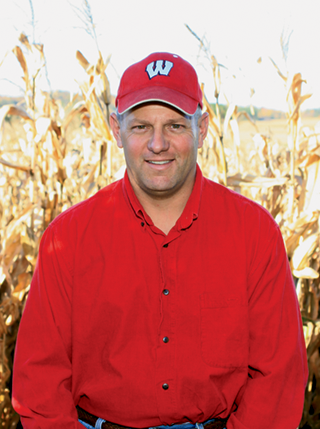In January I attended the 19th annual National No-Tillage Conference (NNTC) in Cincinnati with more than 800 new and veteran no-till professionals.
The tips and information from the speakers, and the networking opportunities, allowed fellow no-tillers to review their management practices and decide if the new ideas and perspectives they were hearing could be adopted on their farms.
While I led a classroom session on some of the technologies available to no-tillers today, I spent the rest of the conference trying to identify some practices that might work for my farm.
I was intrigued the most by sessions on cover crops and precision technology. I learned things in both of these sessions that I could incorporate into my farm and research in an effort to improve soil organic matter, nutrient-use efficiency and farm profitability.
Building Healthy Soils. Jim Hoorman from Ohio State University, and Ray Weil from the University of Maryland, provided lots of valuable information on improving soil quality by planting cover crops.
Additionally, Randall Reeder, Alan Sundermeier and Rafiq Islam, all from Ohio State University, shared how continuous no-till can improve soil quality.
The combination of healthy soils and cover crops build soil organic matter and residue.
Working together, they can hold an additional $75 to $100 per acre of nitrogen, phosphorus and potassium that would normally be lost, the educators said.
They also described how incorporating cover crops can improve your soil’s water-holding capacity.
With increased moisture levels and nutrients available later in the growing season, crops can be productive for a longer period, which translates to higher yields and improved profitability.
Higher moisture and nutrient levels also allow soil life — including worms, microbes and fungi — to be more active throughout the season and accelerate the development of soil organic matter.
Hoorman and Weil discussed how cover crops and proper soil-quality management allow crops to more easily access soil nutrients and improve crop growth, translating to higher yields and profitability. Cover crops may also reduce soybean pests and diseases, as well as weed populations.
After listening and talking with these speakers, I plan on doing some onfarm research with alternative cover crops and planting dates to see which covers work best in our farming system.
The challenge for us is that we’re in the northern part of the Corn Belt, so establishing cover crops after harvest may be difficult.
We may have to shorten maturities slightly to get our cover crops established, but the benefits may outweigh the risk.
Critical Precision Tools
In regards to precision technology, I picked up some good pointers from conference speakers Scott Shearer from University of Kentucky and Paul Jasa from the University of Nebraska.
Jasa emphasized the importance of uniformity in stand establishment so each plant has equal access to water, nutrients, sunlight and air. This ensures all plants can perform at their maximum yield potential.
Shearer emphasized the opportunities to save money on inputs by using section or row control on planters and sprayers to minimize the over- and under-application of fertilizer, seed and herbicides.
These technologies are becoming more reliable and easier to implement, and many functions can now be handled with one controller instead of several separate systems, Shearer said.
Uniformity is extremely important as nutrients and seed are applied in each region of the field, Jasa pointed out. No-tillers should not only apply inputs precisely, but learn how seeding and fertilizer requirements change as they move across variable landscapes.
This is where onfarm research comes in. No-tillers can lay out different seeding and fertilizer rates across the landscape, and use precision ag equipment to apply different rates and measure any changes.
Precision ag software helps us learn from this data so we can develop seeding and fertilizer prescriptions that maximize yield, nutrient efficiency and profitability.
Precision ag technologies will not only allow us to become more profitable on every acre but help us improve our environmental performance and minimize our nutrient losses.
Make That Call
Most all of the speakers at the conference were excellent and I encourage you to contact any of them if you have more questions on their topics.
In somes cases, a short phone conversation could help you find more useful information on these and other topics.
Combining the points the speakers made with what you’re already doing with onfarm research could help you manage your application of nutrients and seed, keep input costs down and squeeze more profit from every no-till acre.






